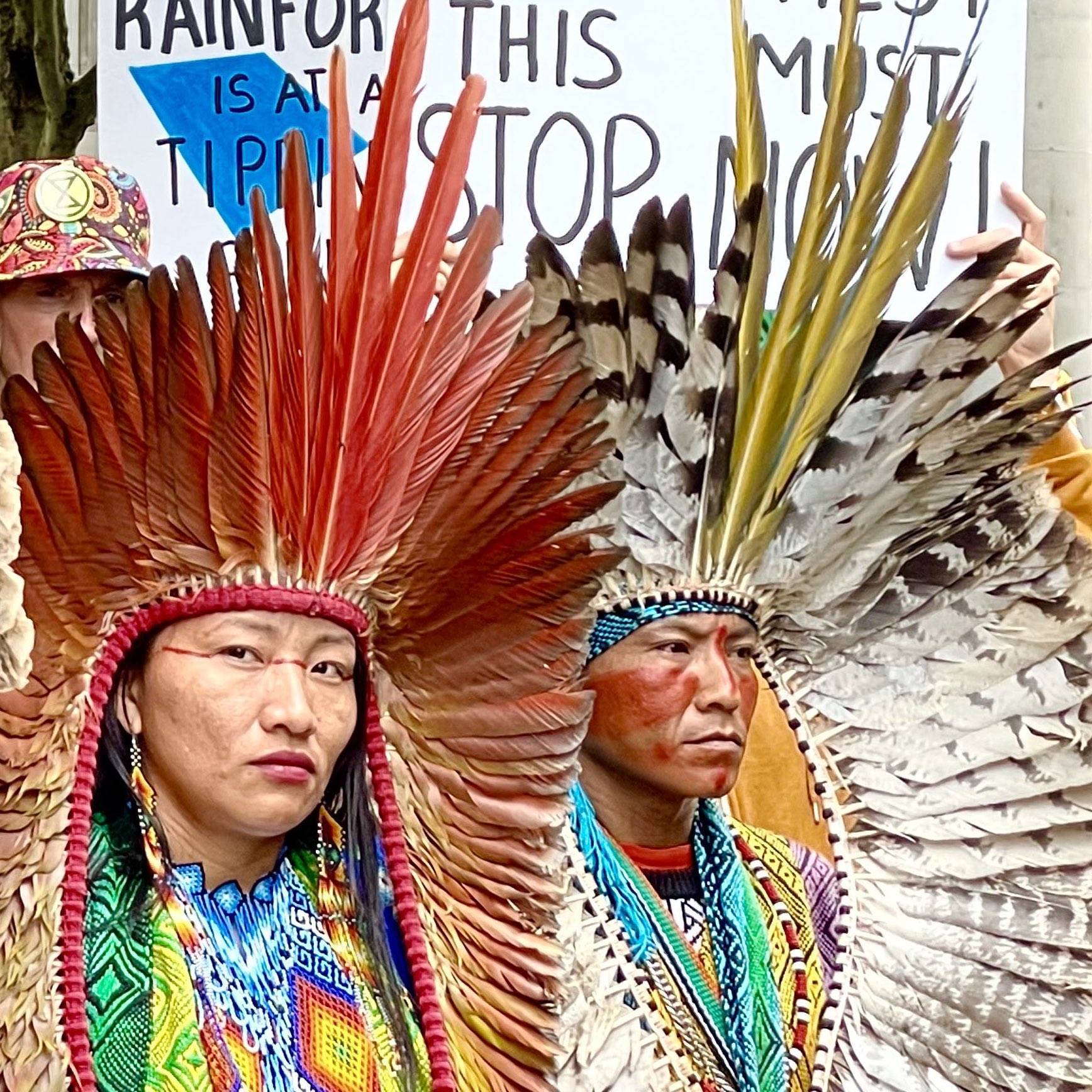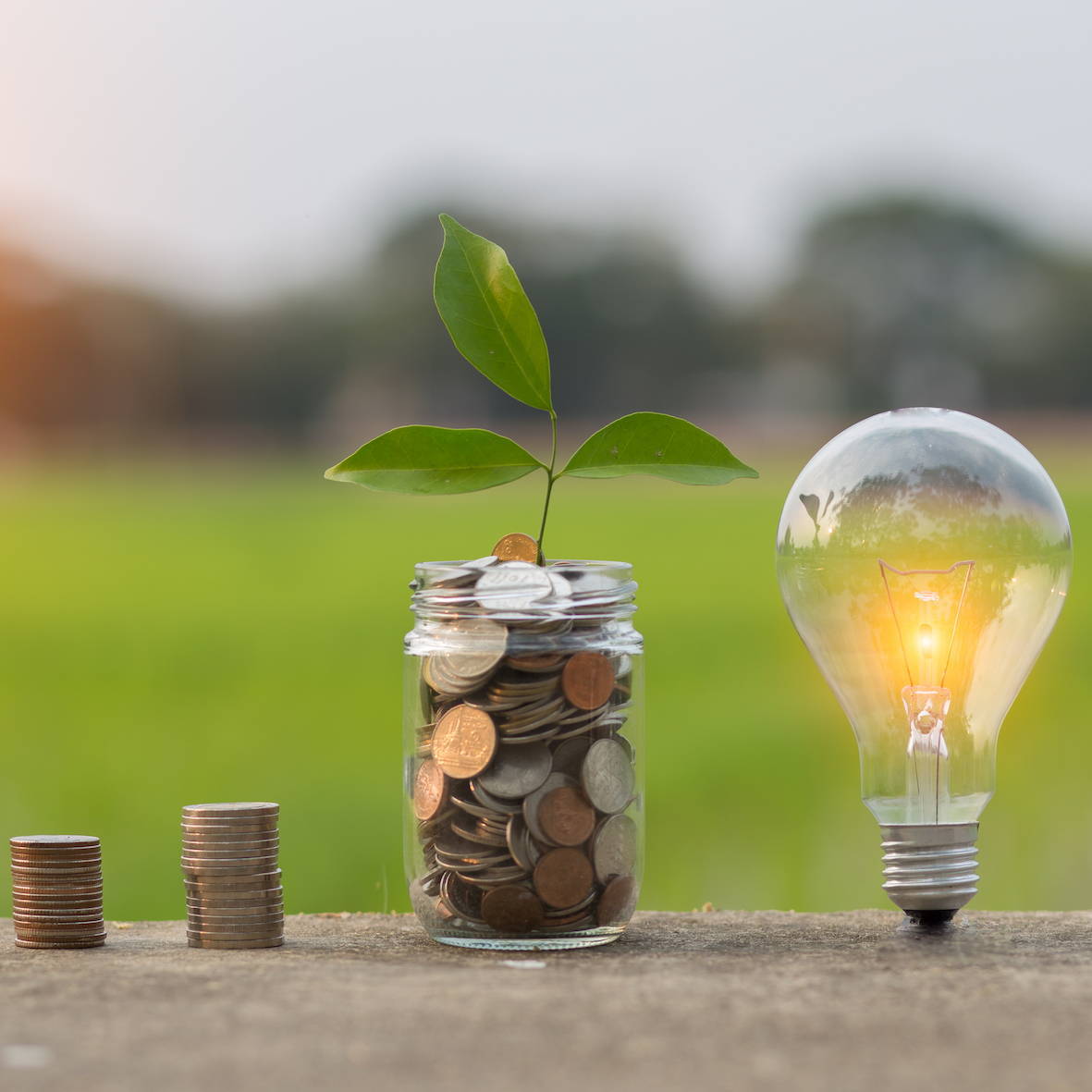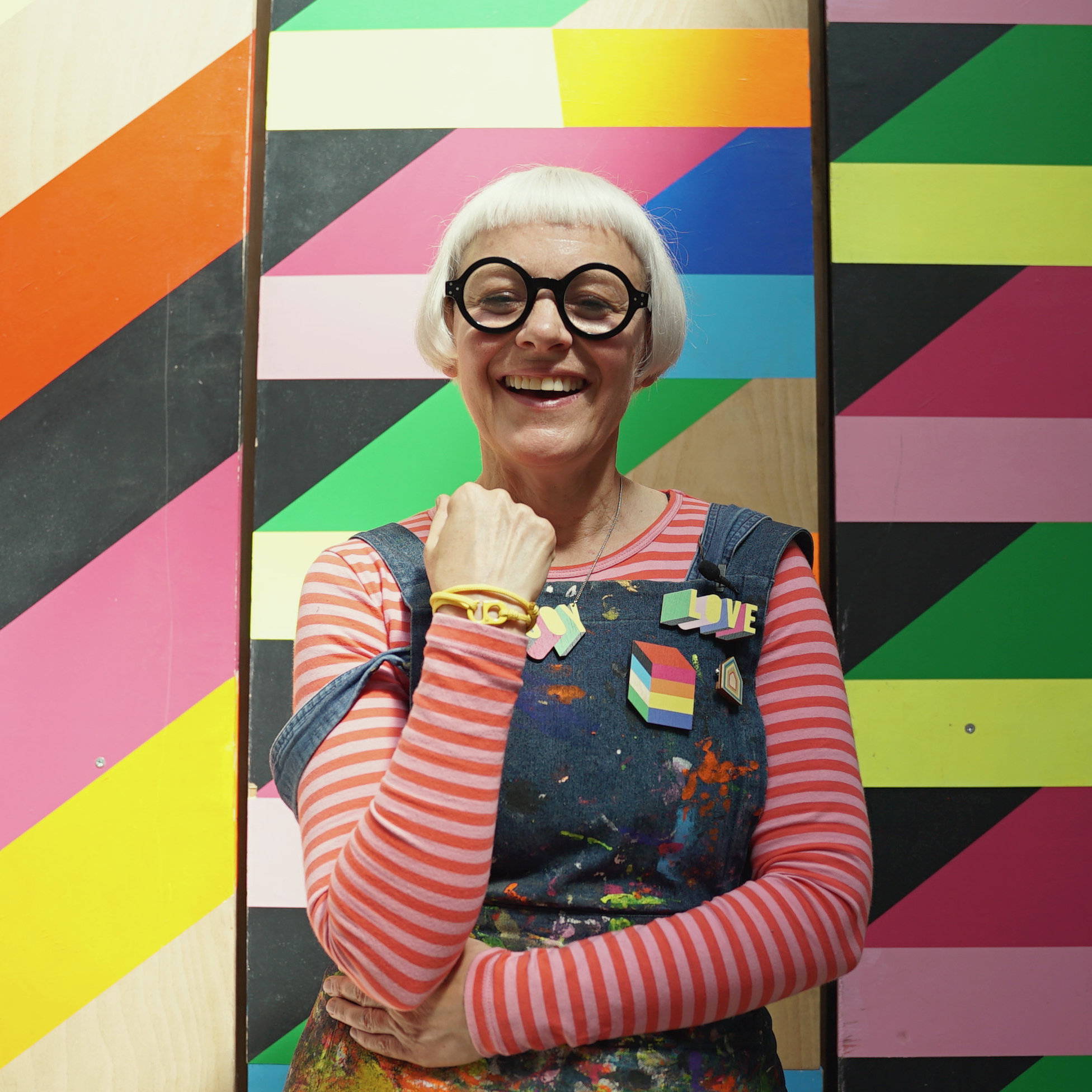
Photograph by Harvey Marcus
Goal 7: Affordable and Clean Energy
ART TO INSPIRE ACTION
Meet the artist behind our Clean Power flags in Glasgow
By Emma Elms
28 october 2021
London-born artist Morag Myerscough, who is renowned for transforming public spaces with her vibrant outdoor installations, was the perfect collaborator for our new Clean Power campaign. Inspiring, community-minded and on her own journey into green living, Morag’s creative vision translated our call to action into a stunning art installation that’s set to lift the spirits of passers-by in Glasgow at the COP26 climate conference, while conveying our vital message about the importance of renewable energy.
As part of our campaign we’re also launching a new range of 100% recycled T-shirts bearing the words: ‘Sun’, ‘Sea’ and ‘Air’ – the three key clean energy sources - and our Clean Power logo, as well as a zero waste phone case, all designed by Morag. We caught up with Morag, 57, just before she moved from her East London home (a converted pub) to start a new life in the green belt and asked her about the thinking behind her powerful work.
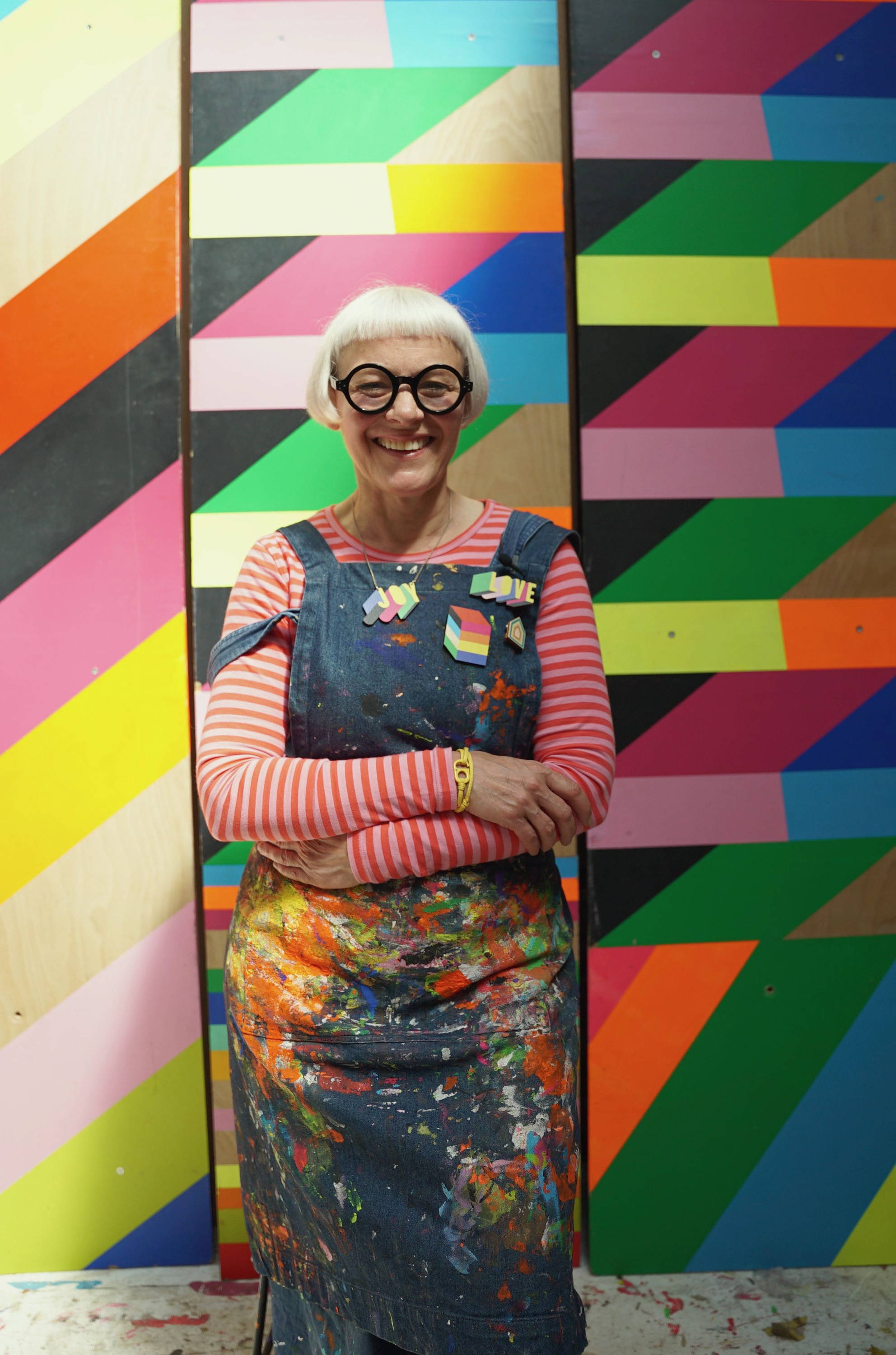
Photograph by Harvey Marcus
What made you decide to get involved in our Clean Power campaign?
I think it’s a really important message to get across in a public space. I liked the idea of showing the everyday person that it’s not out of their reach to start making a better world very easily. If you can get out in public and get the message across in a powerful, joyful way, then hopefully you’ll plant the seed in people’s heads that they can make the switch to clean energy. It was an education for me as well. I’m just an everyday punter!
Our Scottish Canals activation
featuring Morag's flags
You’re about to quit London for a greener lifestyle. Tell me more…
We’re moving to the outskirts of London. Lockdown changed my perspective and that’s why I’m moving. I want to have a different lifestyle. We’ll have five acres and a massive vegetable garden. At the moment, in London every year I grow three tomato plants but I’ve done all I can here! In our new place, there’s a wild-flower meadow and I’m going to keep bees. We’re going to get another dog to join Elvis, our Westie, and just have a different lifestyle.
To be honest, I don’t think I’ve lived in London very sustainably, but I want to change that. Our new house manages to produce half its energy and put it back in the grid. I think it’s amazing we’ve managed to achieve so much with renewable energy over the last few years. I really like wind farms. The first time I saw really incredible wind farms was when I went to Palm Springs. I think they’re very majestic and beautiful – and of course they’re very good because they give us clean energy.
How did the project fit with your own green values?
Well, in the last election I voted Green. I was amazed how few people did because with everything that’s happening with our planet right now, everyone’s trying to get things back on track. We’ve got to try, haven’t we? I wouldn’t say in my work I’m perfect at all, but I try to make sure what I do has a social responsibility of some form. When I start a project, a temporary installation, I try to make sure that whatever I’m producing won’t end there and be put into landfill. Afterwards, either my materials end up in schools, the community themselves keep the work, it’s repurposed in some way or if all else fails, the materials come back to me and I reuse them.
I’ve had a G-Wiz electric car for about 16 years and everyone used to comment how ugly it was. I’m friends with a lot of designers and they’d say, ‘How can you drive a car like that?’ and I’d tell them, ‘But it’s pretty inside!’ A guy from Nissan told me, ‘You’re an early adopter. They’ll all eat their words.’ He was right.
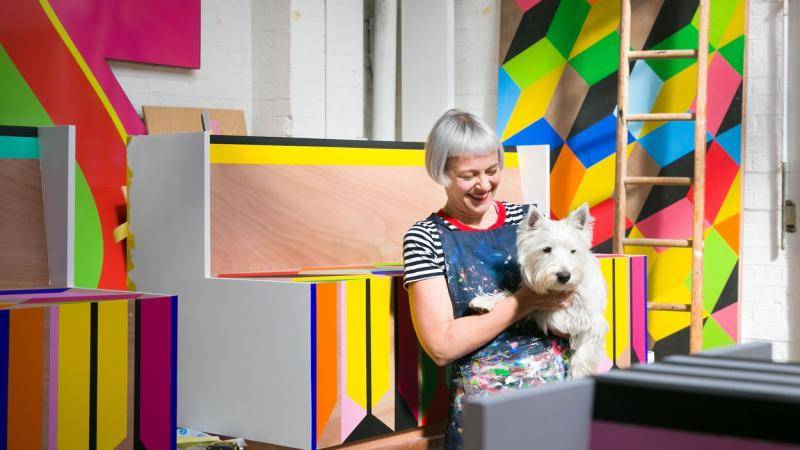
Image: www.moragmyerscough.com
How would you describe your work?
I call them structural installations. I like making bold statements that connect people. Sometimes they might be my own narrative, or other times it’ll be the narrative of a community I’m working with. The thing I’m really fascinated about is how to make work that belongs to people. I want to make pieces that improve a public environment, such as hospitals, schools or outdoor spaces. I love it if it’s free to view too – I like the idea that people just come across my work, rather than going to a gallery as such. I have just made a piece in a recent exhibition, but it’s free to enter.
You could have your pick of the world’s biggest galleries, but you mostly choose to work in community spaces like hospitals and schools. Why?
For me, the most important thing is to make work that connects people. Working in hospitals is one of my biggest achievements. For the bedrooms I created for Sheffield Children’s Hospital I used bright colours and geometric patterns. It's a collaborative process. By discussing it with young patients and clinical staff, I started to understand what would make a difference. I also brought in my own knowledge, about which materials make you feel warm and how to make a clinical space feel like home. You listen, take things in and then you also give back. I did a project with Method cleaning products and I asked them to sponsor the hospital garden as part of that, so they gave me a budget to build the garden, which we’re finishing soon. At the hospital, the kids, their families and the people who work there told me they feel happier in the space I’ve created.
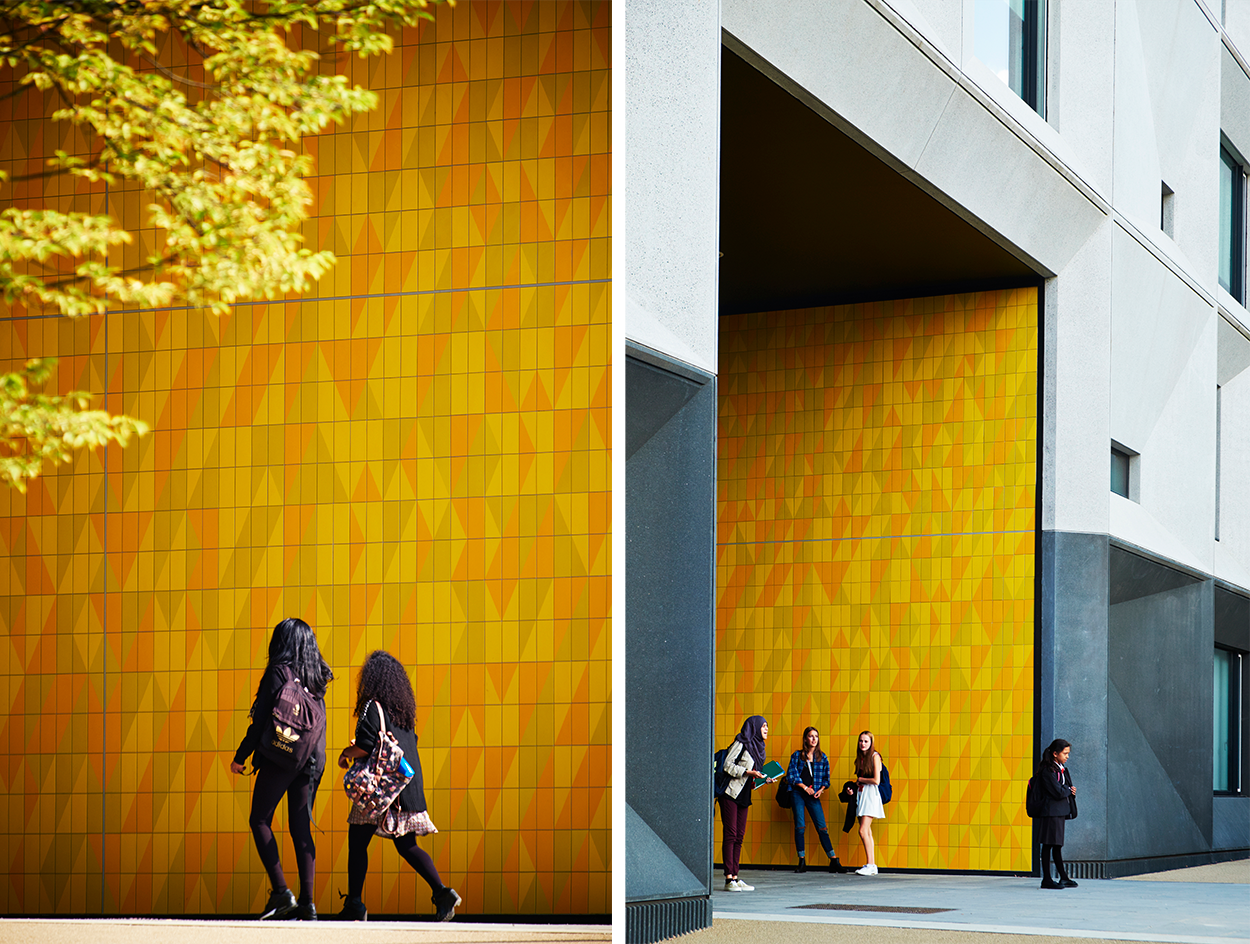
Image: Burntwood School, London
I’ve also made work for 11 schools with the architects Allford Hall Monaghan Morris (AHMM). One of the ones I’m proudest of is Burntwood School in Wandsworth, London (pictured above). Our aim was to make an environment for people to thrive in, rather than exist in. [NB Readers, the school ended up winning multiple prizes for its iconic design and the architect won the 2015 RIBA Stirling Prize.]
What kind of look did you go for with our T-shirts?
I wanted them to be bold. I like the one with the wording on its side, because it’s quite abstract, so you’re not walking around trying to be an advert, you almost have to look twice before you read it. I asked for the wording: ‘sun’, ‘sea’ and ‘air’. I mean, we can’t exist without them, can we?! I’m not religious, but I think if I was alive a very long time ago, I would have worshipped the sun, sea and air.
100% of profits from the sales of #TOGETHER products go to charities that advance the Sustainable Development Goals. Find out more here.
You’ve described your mantra as: ‘Make happy those who are near and those who are far will come’ – talk me through what you meant…
It’s a Chinese proverb, so I probably completely mis-read it myself! I just believe that if you work together as a community, then strength and companionship blossoms. That will exude out to other people who’ll want to be connected to this thing you’ve made together. For instance, at the moment, I’m working with Shakespeare Walk Adventure Playground in Hackney and I just love the play workers there so much. They give so much to the young people.
What was your breakthrough moment in the art world?
I felt like an outsider for many years and so I carved my own space for my work. I had my breakthrough project in 2012 when I made my first structural installation, The Movement Cafe in Greenwich, London. I finally truly expressed myself. It took me many years and the world and attitudes to change but I always had a mission and a vision. Finally, I felt I was making the work I'm here to do.
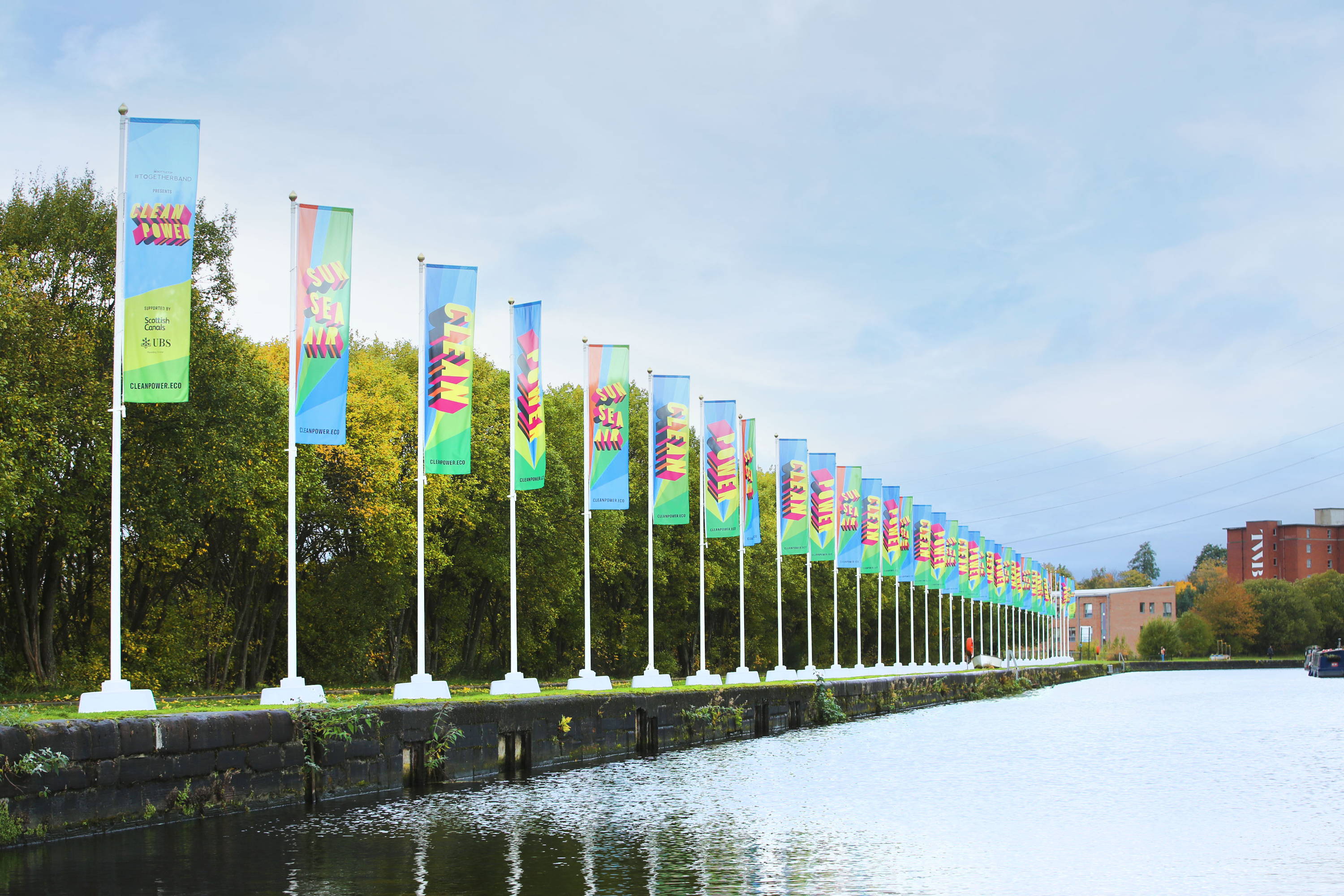
Our Glasgow canals collaboration
How do you manage the huge scale of your work?
It takes a lot of planning and organisation as I work with different specialists, engineers and fabricators. It uses different parts of your brain at different times throughout the process. Often the work is made with the community as it's so important that the end result 'belongs' to everybody. One of the best ways of doing this is actually making the work together.
In Aberdeen recently, over 100 people from the community were involved in helping paint an installation. Then they come and see the finished result and are like, ‘Oh, we painted this bit!’ It’s like a jigsaw because I draw it all out, plan it out, then get people to paint by numbers. Often the painters don’t realise what it’ll be like until they see it all together. For me, the bigger, the better!
What’s been the best thing about working with the #TOGETHERBAND team so far?
I really responded to the brief and the aspirations you gave me. I listened to what you wanted, but you’ve allowed me to do the work how I wanted it to be which, as an artist, felt great. I’m so excited to see it!
Watch our exclusive video with Morag below.

